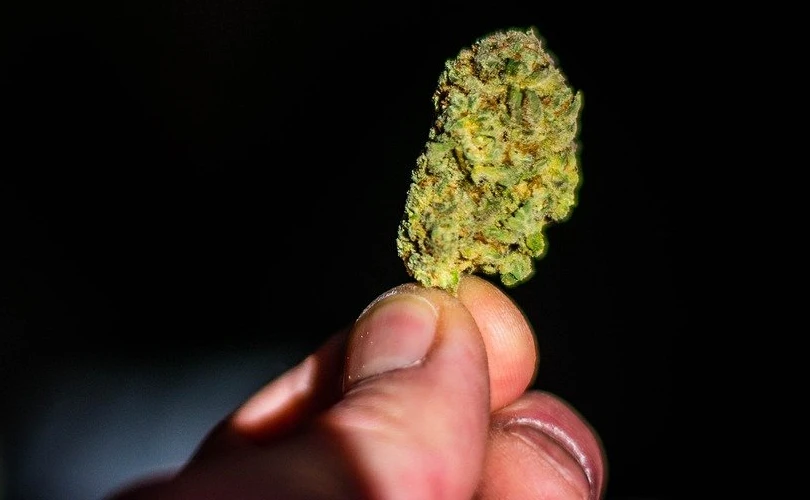Cannabis Tissue Culture Recovery: Saving Rare Genetics From Disease
Introduction
In the rapidly evolving cannabis industry, preserving rare and valuable genetic strains is not just a matter of plant passion—it’s a tactical necessity. For growers and breeders alike, these genetics often represent years, if not decades, of meticulous cultivation. Strains with high potency, disease resistance, unique terpene profiles, or medical efficacy are the cornerstone of innovation and brand identity. However, as cannabis cultivation scales and becomes more commercialized, a silent threat looms in the form of plant pathogens, pests, and environmental stress. These invaders are capable of wiping out entire collections of genetics, leaving cultivators scrambling for ways to recover and rebuild.
Enter tissue culture technology, a cutting-edge tool rapidly gaining traction in cannabis circles. Also referred to as micropropagation, tissue culture involves taking a small, sterile piece of plant tissue—often a meristem—and nurturing it in a controlled laboratory setting. This method enables cultivators to regenerate whole, disease-free plants with the exact genetic identity of the original specimen. More than just cloning, tissue culture represents a systemized form of plant rejuvenation that offers hope for preserving and even revitalizing rare strains previously believed to be lost due to infection or degradation.
Beyond recovery, tissue culture is becoming essential in safeguarding high-value plant lines against the growing threat of systemic infections like Hop Latent Viroid (HLVd), Fusarium, and various viral agents that traditional cultivation practices often cannot eradicate. When applied correctly, tissue culture allows cultivators to remove diseased material at the cellular level and cultivate clean, verified mother plants that are pathogen-free. This is especially transformative for cannabis, which lacks the same breadth of disease-resistant breeding programs common in other commercial crops.
Major commercial growers and boutique breeders alike are starting to look toward tissue culture not only for its recovery potential but also for its scalability and reproducibility. As the legal cannabis market matures, the need for GMP-compliant, disease-free, and genetically consistent plants becomes paramount. Tissue culture ensures that cannabis operations can simultaneously protect, reproduce, and optimize genetics without starting from zero after pathogen infestations.
As cannabis genetics become increasingly commodified and marketed across national and international markets, the ability to protect and revitalize superior cultivars will determine who leads—and who lags—within the industry. Let’s take a deeper dive into the science and studies behind this powerful biotechnology, and how its integration is revolutionizing genetic preservation in cannabis.
Unlocking the Power of Micropropagation: The Science Behind Tissue Culture
Tissue culture isn’t new to agricultural science. It’s been an essential practice in crop protection and propagation for decades in sectors like banana, potato, and orchid cultivation. However, it’s only within the last few years that cannabis has become the new frontier for its application due to the plant’s rising commercial value and increased vulnerability to diseases like Hop Latent Viroid (HLVd).
One landmark study by researchers at Phylos Bioscience and Oregon CBD in 2021 confirmed that HLVd is now one of the most widespread threats to cannabis cultivation, leading to stunted growth, diminished THC production, and overall plant decline. Traditional cloning methods only replicate the existing infection, often compounding the problem across entire facilities. This is where tissue culture recovery offers a game-changing solution: by targeting and extracting the apical meristem—the undifferentiated tissue at the plant tip, which grows rapidly and is often free from systemic infection—it is possible to regrow a clean, unaffected version of the same genetic line.
Reviving Genetic Gold: Studies That Prove Tissue Culture Works
Another key study published in Frontiers in Plant Science in 2020 detailed the protocols and success rates of cannabis tissue culture techniques. The paper, titled “Cannabis sativa Tissue Culture: Recent Advances and Future Prospects,” emphasized the effectiveness of microshoot culture and hormonal manipulation in generating high-frequency, clean shoot regeneration. These advanced protocols make it possible to not just recover old strains but also to mass-produce viable clones with identical chemical and morphological characteristics.
Cannabis-reviewed academic resources also support the success of tissue culture in eliminating fungal contaminants like Fusarium and bacterial infections common in soil-grown plants. In addition to clean-up, researchers have found that tissue culture systems allow for long-term storage through cryopreservation methods. Collections of rare strains can now be banked in cryogenic freezers, awaiting reanimation should mother plants be lost—a groundbreaking way to preserve years of breeding and investment.
Industry Leaders and Labs Spearheading Cannabis Recovery Initiatives
Groups such as the BioInnovation Institute and licensed Canadian labs like Segra International have published whitepapers and documented protocols outlining industrial-scale cannabis germplasm cleanup, propagation timelines, and quality assurance methods. Their data demonstrate high success rates in bringing diseased or weakened lines back to commercial viability through tissue culture recovery. By incorporating rigorous molecular testing such as RT-PCR, these labs ensure each new plant meets strict health and genetic fidelity standards.
Tissue Culture as a Catalyst for Breeding and Innovation
It’s also noteworthy that tissue culture plays a crucial role in diversifying the plant’s genetic portfolio, allowing breeders to focus on expression without the interruption of latent diseases. This enables more precise trait selection, whether for higher cannabinoid content, targeted terpene profiles, or particular medical therapeutic outcomes, based on clean and stabilized genetic stock.
Conclusion: The Future of Cannabis Genetics Starts in the Lab
Cannabis tissue culture recovery is redefining what’s possible in the industry by creating a lifeline for strains previously thought beyond saving. In an era where disease pressures and genetic degradation threaten even the most cherished cultivars, tissue culture offers a scalable, science-backed solution for preserving the past and empowering the future. For professionals and cultivators eager to fortify their genetic libraries and elevate plant health standards, now is the time to embrace this next-generation technology.
References
1. Cannabis sativa Tissue Culture: Recent Advances and Future Prospects – Frontiers in Plant Science
2. Understanding Hop Latent Viroid (HLVd) in Cannabis – Phylos Bioscience
3. Segra International – Tissue Culture and Plant Propagation
4. Biotechnology Propagation Techniques for Cannabis – BioInnovation Institute
5. Cannabis Cryopreservation and Genetic Banking – In Vitro Cellular & Developmental Biology
Concise Summary:
Cannabis tissue culture recovery is a transformative technology that enables cultivators to regenerate whole, disease-free plants from a small, sterile piece of plant tissue. This process allows for the preservation and revitalization of rare and valuable genetic strains threatened by pathogens, pests, and environmental stress. As the cannabis industry matures, tissue culture is becoming essential for safeguarding high-value plant lines, ensuring genetic consistency, and promoting innovation through precise trait selection.



